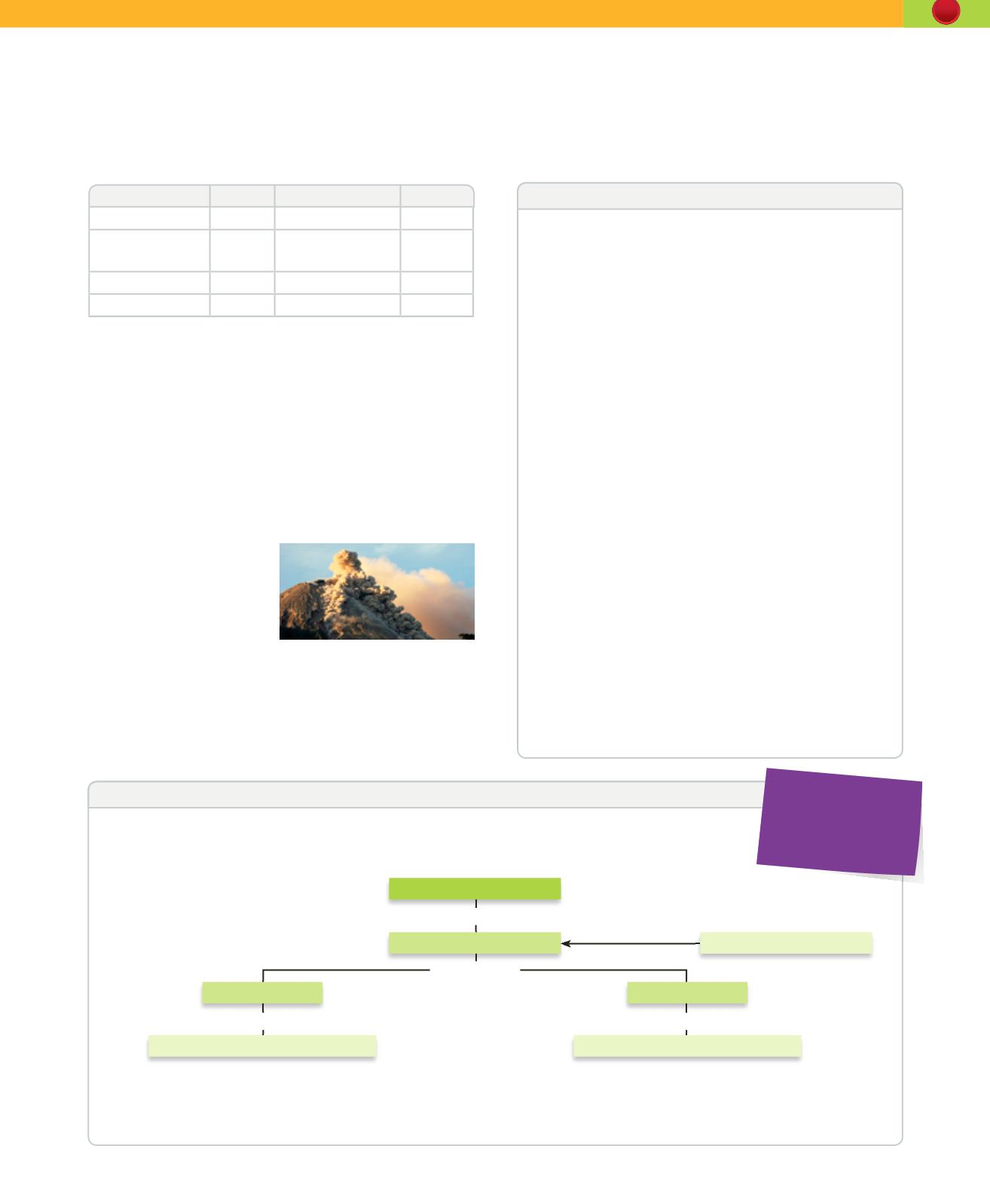
19
1. Internal geological processes
www
Seismic and volcanic risk
74.
Look at the table and put the risks associated with
volcanism in order of severity. Do you think that
famines would cause so many deaths today?
75.
Explain how the risk would vary in an area with
more or less danger and vulnerability.
76.
Explain the influence of the relief of the land or
the winds, on volcanic risk.
77.
Are the following phenomena related to
volcanic eruptions, earthquakes or both?
Lava
streams
,
ground movement
,
tsunami
,
lahar
,
ash
accumulation
.
78.
What measures would you take if you were
surprised by a volcanic eruption near a volcano?
79.
The image shows a
pyroclastic flow. What
are they composed
of and how do they
form? Why are they
dangerous?
80.
What is the difference between prediction and
prevention?
81.
The earthquake in Lorca, in 2011, had a magnitude
of 5.1 and the hypocenter was located only 1 km
deep. How did this influence the damage it caused?
82.
What should you do in the case of an earthquake
in the classroom?
83.
Can an earthquake have several magnitudes and
only one level of intensity? And vice versa? Explain.
The day the sea swallowed the land
It was nearly eight o’clock in the morning on 26
December. The earth trembled four thousand metres
deep in the Indian Ocean, 260 kilometres west of
the coast of Aceh, in Indonesia. Meanwhile, on the
paradisiacal coasts of Thailand, Indonesia, India, Sri
Lanka and the countries of south-east Asia, people
prepared to start another day at the beach.
Not even the most pessimistic person could have
thought that many people would not see the New
Year. Hours later, a chain of tidal waves, provoked by
the enormous earthquake that reached 9 on the Richter
scale, wiped the idyllic islands from the map. Beaches
and towns which were submerged in a dense layer of
mud, water and corpses.
El Mundo
, December 2004
(Translated and adapted)
a)
What internal geological process is the text about?
b)
What is the name of the phenomena described, apart
from tidal wave?
c)
What adjectives does the author use to refer to the
coastal areas before the catastrophe?
d)
It has been said that a good part of the 200 000
deaths could have been avoided. How?
e)
What was the magnitude reached on the Richter
scale, mentioned in the text?
f)
Howwould the number of victims had been affected if
the earthquake had occured at night or at midday?
READ AND UNDERSTAND SCIENCE
Risk
Deaths
Risk
Deaths
Lava flows
1 000 Tsunamis
44 000
Ash and pyroclastic
fall
11 000 Earthquakes related
to volcanic activity
100
Hot avalanches
55 000 Gases and acid rain 1 200
Lahars (mudflows) 40 000 Famines and illnesses 110000
❚
Create your own summary of the unit using the
Key concepts
. Add other important information.
❚
Copy the following diagram in your notebook and add the missing information to create a
conceptual map of the unit.
❚
Create your own scientific glossary. Include the following terms:
chimney
,
crater
,
earthquake
,
epicentre
,
focal depth
,
geological agent
,
geological process
,
geological risk
,
geothermal gradient
,
hypocenter
,
intensity
,
lahar
,
landscape
,
lithospheric plates
,
ocean ridge
,
magnitude
,
pyroclastic material
,
relief
,
seismic wave
,
shield volcano
,
stratovolcano
,
trench
,
tsunami
,
volcano.
You can add any other terms you consider important.
STUDY SKILLS
You can record your
summary and listen
to it as many times
as you like to revise.
Relief
is conditioned by
Geological processes
are
cause
Geological agents
Internal
caused by
heat in the Earth’s interior
External
caused by
solar energy


